Art World
False Attributions Have Beleaguered Tintoretto’s Reputation. Three New Museum Shows Hope to Change That
Several works at the three Tintoretto shows at the National Gallery of Art in Washington, DC, feature corrected attributions.
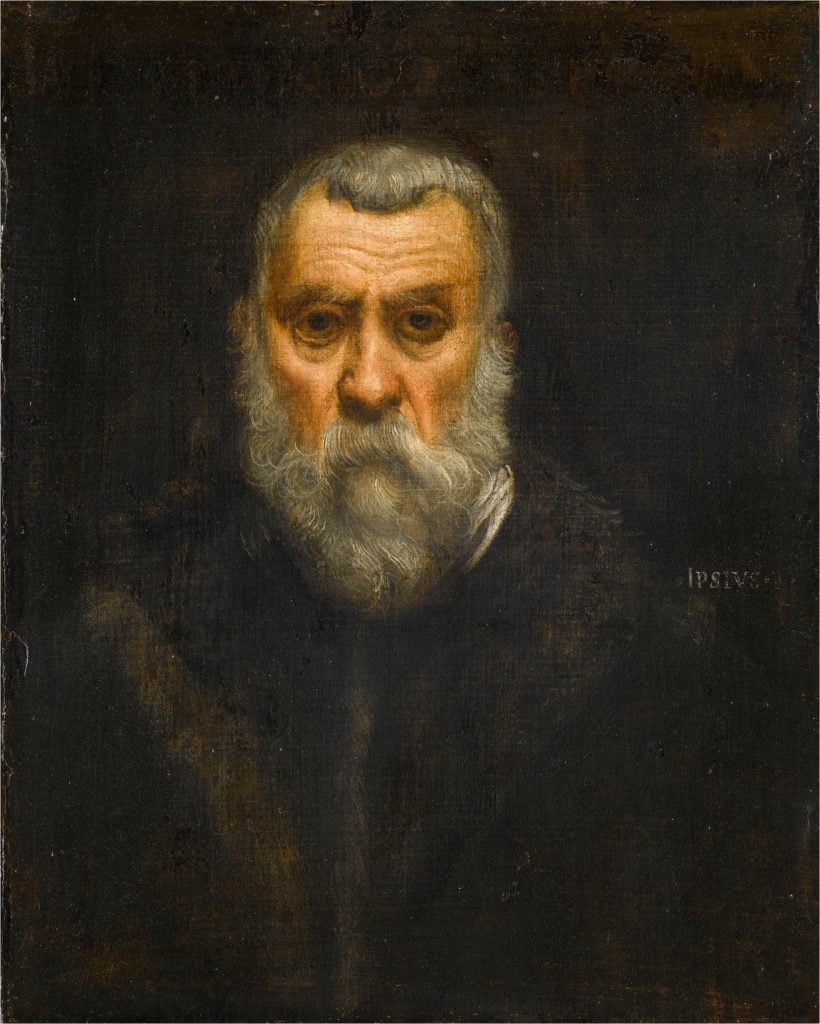
Several works at the three Tintoretto shows at the National Gallery of Art in Washington, DC, feature corrected attributions.

Menachem Wecker

Tintoretto’s was the “most extraordinary brain that painting has ever produced,” as Giorgio Vasari told it. A Tintoretto work that El Greco saw in Venice was “the most beautiful painting in the world.” Peter Paul Rubens owned five of the Italian artist’s canvases. Henry James said, “If Shakespeare is the greatest of poets, Tintoretto is assuredly the greatest of painters.”
The introductory speeches at a press preview for three forthcoming Tintoretto exhibitions at the National Gallery of Art in Washington, DC—timed to the 500th anniversary of the birth of the artist, who died in 1594—felt like a eulogy for art history’s most-praised affiliate. But independent scholar Robert Echols, who co-curated the main show, “Tintoretto: Artist of Renaissance Venice” with Frederick Ilchman, a curator at the Museum of Fine Arts, Boston, noted that Tintoretto’s reputation has slid compared to his contemporaries Michelangelo, Titian, and El Greco.
“His paintings are not well represented in American museums, with the notable exception of the National Gallery of Art,” Echols said. “It is possible to draw a direct line from Tintoretto’s dynamic compositions and elegant brushstrokes through Rubens, Delacroix, and Géricault right on up to de Kooning, the Abstract Expressionists, and to painters of the present day, such as Gerhard Richter, who has often expressed his reverence for Tintoretto.”
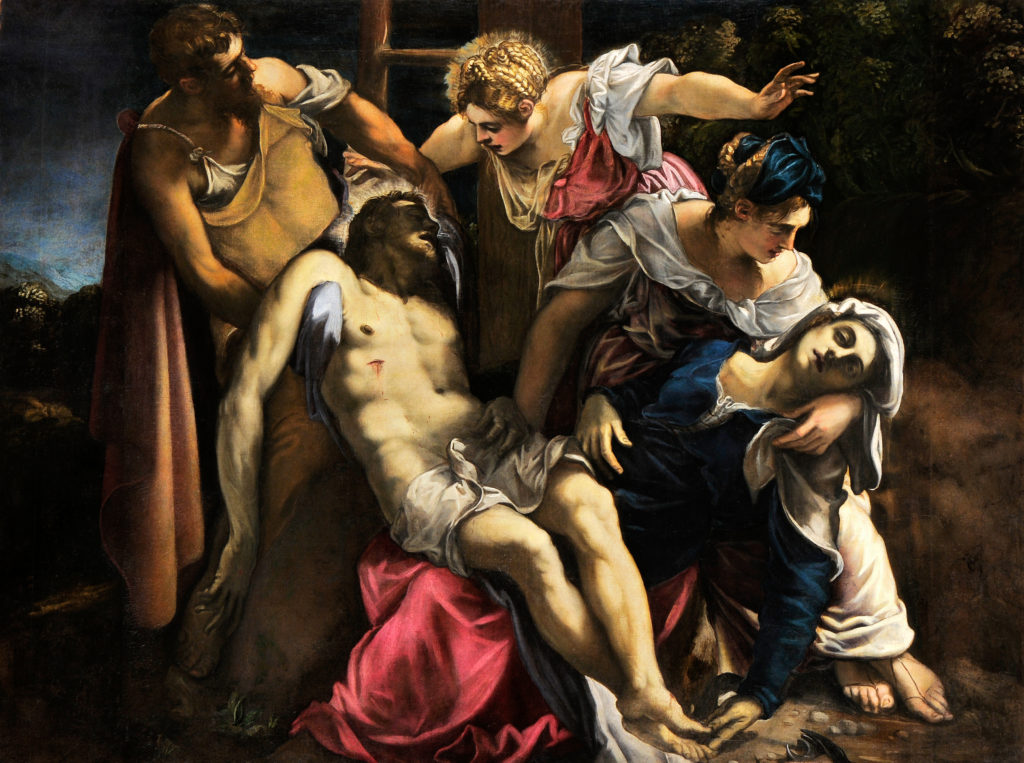
Jacopo Tintoretto, The Deposition of Christ (ca 1562). Gallerie dell’Accademia, Venice.
But Tintoretto has also been plagued by mistaken attributions, Echols and Ilchman said. As the scholarly duo’s research has clarified, Tintoretto’s works ought to be viewed with a similar lens as Rembrandt’s paintings, where the master’s hand must be separated from that of his students, followers, imitators, and others. There was “persistent confusion” about which works Tintoretto actually painted as late as the 1990s, and real autographed works were shown alongside other works, purported to be Tintoretto’s, which distorted and diminished the sense of his powerful, artistic personality, according to Ilchman.
“There may be no other Old Master whose catalogue has been so inflated by the paintings of other, generally weaker artists,” he said. His co-curator’s dissertation removed dozens of works from Tintoretto’s oeuvre, Ilchman said during the preview.
The exhibition—surprisingly, the artist’s first-ever retrospective in North America—could help change that. The main show, which is open March 24 through July 7, is accompanied in by two smaller exhibitions, “Drawing in Tintoretto’s Venice” and “Venetian Prints in the Time of Tintoretto” (both March 24-June 9). In the latter two shows, works which have been re-attributed abound.
The label accompanying a circa-1595 charcoal drawing from the British Museum, titled Man with Crossed Arms, Leaning Forward, attributes the work to Domenico Tintoretto, the artist’s son, but an inscription on the matte itself states “Jacopo Tintoretto.” The label notes that “the focus on the external profile of the body rather than its internal structure, as well as the somewhat miscalculated anatomy, reveal it to be the work of the younger Tintoretto.”
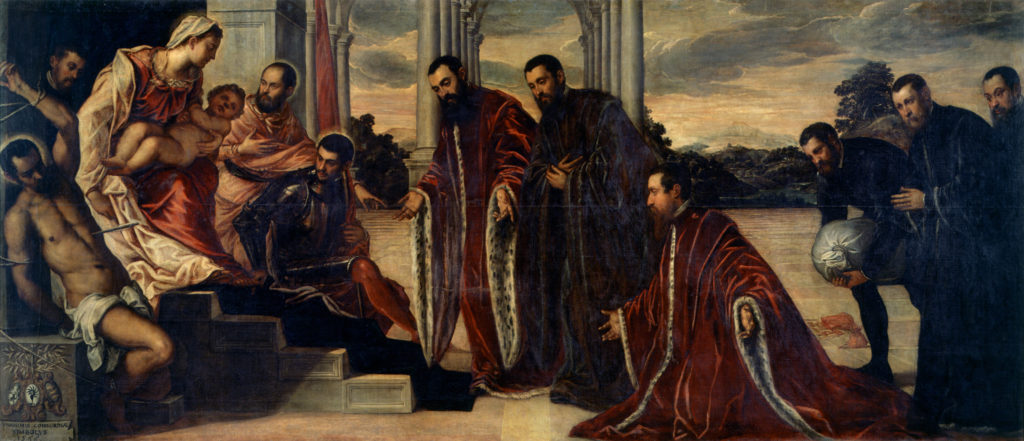
Jacopo Tintoretto, The Madonna of the Treasurers (1567). Courtesy of Gallerie dell’Accademia, Venice Scala/Ministero per i Beni e le Attività culturali/Art Resource, New York.
Elsewhere, Domenico’s Miracle of the Slave (c. 1611-12) appears in a matte labeled “Jacopo Robusti Tintoretto”; Paris Bordone’s Man Playing a Viola da Gamba (c. 1525-35) was previously attributed to Titian and separately to Tintoretto; and Day (c. 1565-75) belongs to Tintoretto’s workshop and “may well be the work of an assistant copying one by Tintoretto,” per the label. Several other works in the shows are attributed to the workshop, and a few to “Tintoretto (?) and workshop.”

Installation view at the National Gallery. Photo: Menachem Wecker.
Upstairs, in the exhibition of nearly 50 (often enormous) Tintoretto paintings, The Entombment of Christ (1594), typically thought to be Tintoretto’s final painting, is labeled as a collaboration between Jacopo and Domenico. Completed the year of Jacopo’s death for San Giorgio Maggiore, the work was composed by Jacopo but executed largely by Domenico, according to the label.
“This picture has always been called ‘Tintoretto’s last one,’” Ilchman said. “Based on many years of looking at paintings by Jacopo, and his son Domenico, the sort of workshop foreman, it’s become pretty clear to us that although the conception is brilliant, and clearly by Jacopo the father, the execution must be largely, and maybe even entirely by the son.”
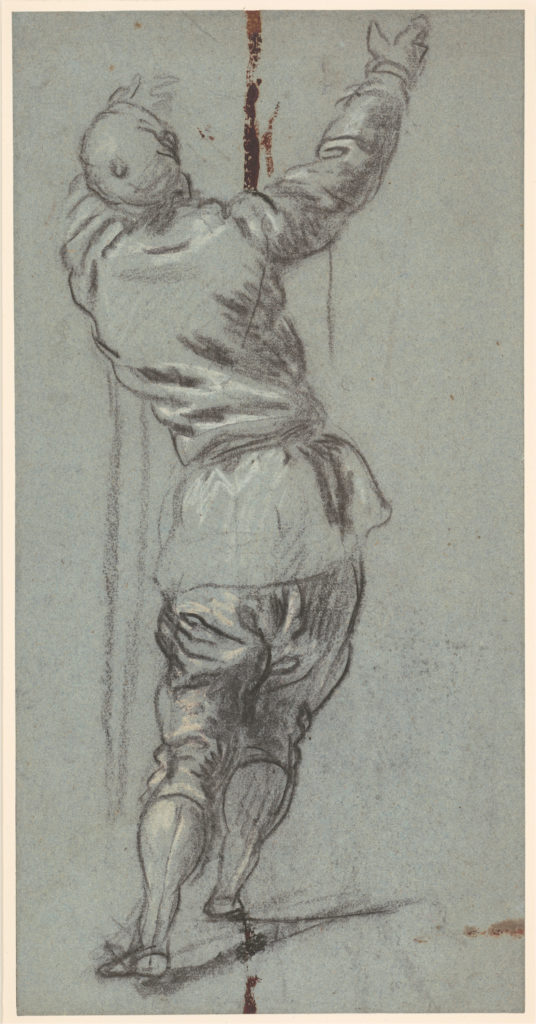
Jacopo Tintoretto, Standing Clothed Man Seen From Behind (ca. 1555). The Royal Collection/Her Majesty Queen Elizabeth IIWall: Lent by Her Majesty Queen Elizabeth IILender list: Her Majesty Queen Elizabeth II
Royal Collection Trust.
The onus should fall on museums to explain their attribution processes and justify their conclusions to the public, Echols said.
“There were a number of re-attributions of the Tintorettos that I made here, and I think it’s important to give the viewers the information necessary and the basis for making the change in attribution,” he said. “Connoisseur[ship] is presented as a kind of ineffable skill—you see something and immediately you know. But there’s something to that. I think both of us feel that we see a Tintoretto or a supposed Tintoretto and immediately have a sense, ‘Yes. This is a Tintoretto.’ ‘No. It’s not.’”
Ilchman added that the two scholars’ interest in connoisseurship and in refining Tintoretto’s oeuvre is important, but it isn’t an end in itself.
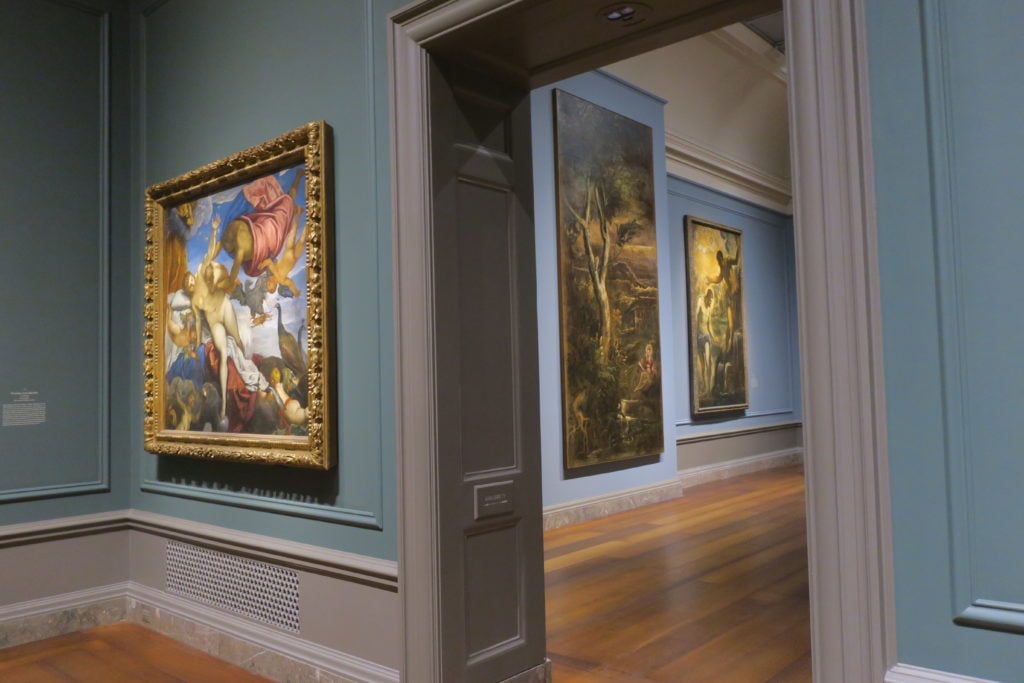
Installation view at the National Gallery. Photo: Menachem Wecker.
“Clarifying Tintoretto’s catalogue, which we have been doing now for 15 or so years, is really the starting point,” he said. “Solid art history needs this fundamental work, and then you can think about its interpretation, it’s social context, how it works in the realm of ideas, what it says about the place, connections with religion, literature, and politics. But all of those things must rest upon a more sure knowledge of his oeuvre.”
This kind of detective work has been on the decline of late, they say, having given way to theory research which is sometimes seen as sexier.
“Certainly for the period that I’ve been active as an art historian there has been more emphasis on theory. Also, there has been a lot of emphasis on social context and, consequently, archival research. What has most recently gone out of fashion is what we would call connoisseurship. To some extent, that results from the term ‘connoisseurship,’ which immediately begins to sound elitist,” Echols said. “It should be based on a very careful, intellectual analysis based on the visual evidence, and any other evidence that exists.”